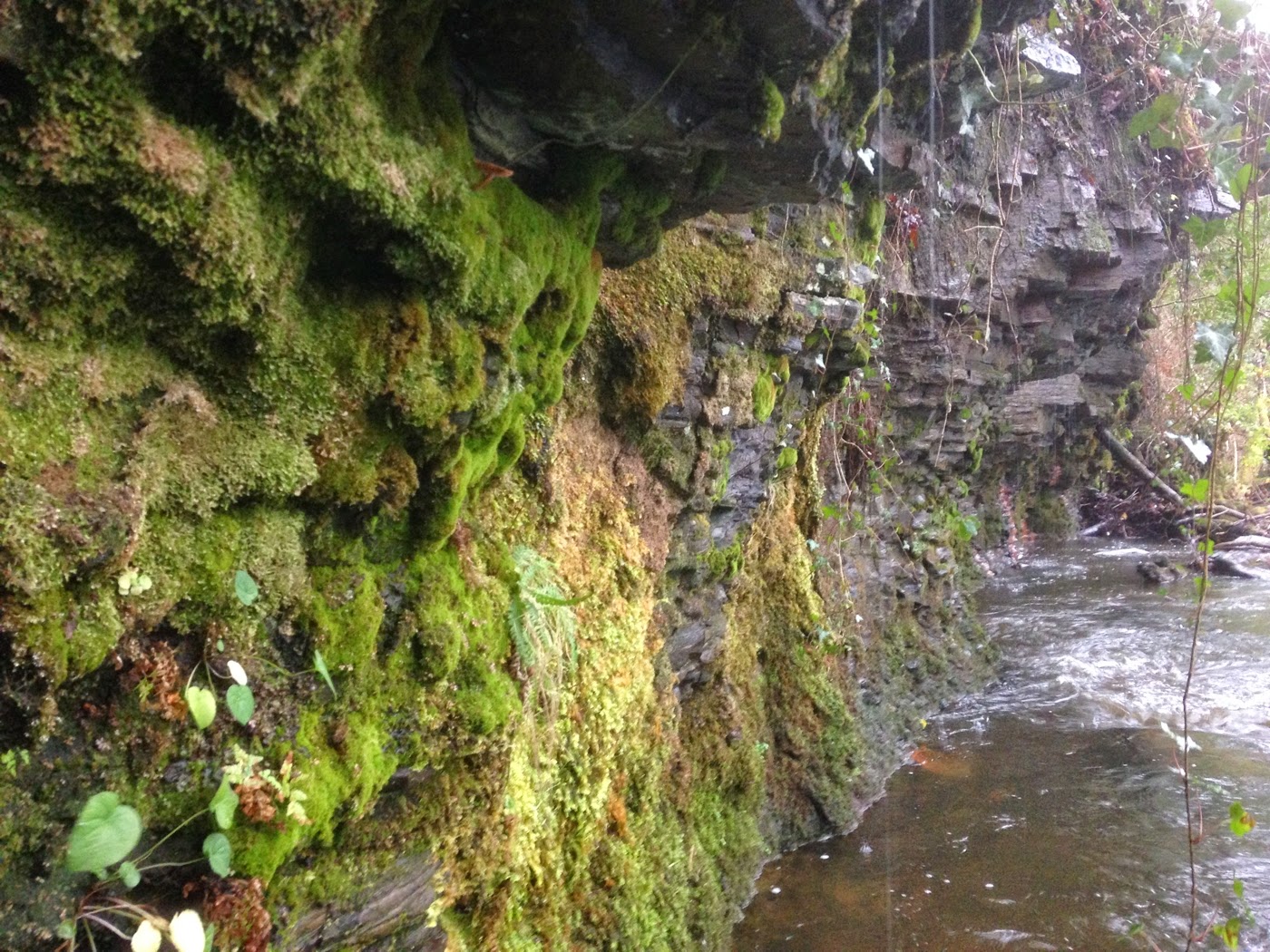 |
| for some reason the image has rotated 90o clockwise? |
I spent about an hour looking at the 60m section shown by the yellow line below, i.e. the lower 2m of damp cliff above car park between SS63008742 & SS62958744 and recorded 33 bryophytes and 34 vasculars. The Scapania cuspiduligera population was only noted along the eastern half of the line, the core of the colony being focussed at SS62998742. I only had a brief look at the western section and could easily have overlooked it, but the cliff here was wetter with more robust vegetation.
The main direct associates of the Scapania noted were Bryum capillare, Encalypta streptocarpa, Gymnostomum aeruginosum, Homalothecium sericeum, Jungermannia atrovirens, Leiocolea turbinata, Lejeunea cavifolia, Schistidium crassipilum, Trichostomum crispulum & Zygodon viridissimus var. stirtonii. Other species noted that help characterise the vegetation included Bryum pseudotriquetrum, Didymodon tophaceus, Eucladium verticillatum, Fissidens adianthoides & Mnium stellare.
This is a very family friendly spot well worth a visit if you down that way and I can highly recommend the Gower Breakfast in the Mumbles Pier coffee shop. On a more serious, note this site is likely to be affected/lost by the proposed redevelopment of the pier headland, though I'm not sure what stage it's at presently. I'm sure there must be a few more species to discover here so worth taking a look while you can!

%2B30dec14%2B1sa.jpg)

















-1a.jpg)





































